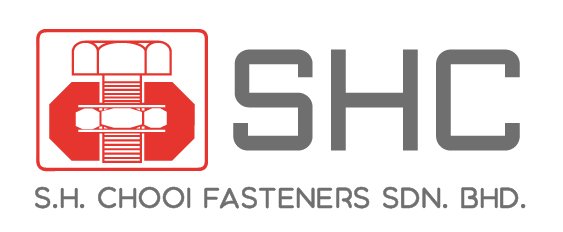Conveyor
Top Conveyor Maintenance Service in Penang
Top Conveyor Maintenance Service in Penang by SHC: Benefits and Solutions

In Penang, SHC is renowned for offering reliable conveyor maintenance services. Implementing good machine maintenance protocols is essential in the manufacturing industry to prevent machinery breakdowns and ensure smooth production processes. They specialize in providing tailored maintenance solutions that keep your conveyor equipment running smoothly, reducing downtime and prolonging the life of your systems. Explore why companies in Penang rely on SHC to fulfill their needs for expert conveyor system maintenance by SHC.
Key Takeaways
- SHC offers comprehensive conveyor maintenance services, including predictive, routine, and corrective maintenance to enhance performance and longevity.
- Regular inspections and preventive maintenance programs are critical to avoid downtime, reduce costs, and ensure optimal operation of conveyor systems.
- Utilizing a computerized maintenance management system (CMMS) improves scheduling, data organization, and communication, streamlining SHC’s maintenance operations.
- Planned maintenance is essential for ensuring equipment operates correctly and preventing unscheduled breakdowns, contrasting with other strategies like condition-based maintenance.
What is Conveyor Maintenance?
Conveyor maintenance refers to the regular upkeep and repair of conveyor systems to ensure they function properly and efficiently. This process involves a range of activities, from routine cleaning and lubrication to more complex tasks like predictive maintenance and corrective maintenance. Effective conveyor maintenance is crucial for preventing downtime, reducing maintenance costs, and ensuring the overall performance of the conveyor system. By keeping the equipment in optimal condition, businesses can avoid the financial strain associated with unexpected breakdowns and maintain smooth operational flow.
About SHC’s Conveyor Maintenance Service
Maintenance encompasses the array of processes required to ensure that machinery and assets operate smoothly. SHC stands as a leading provider in these critical services, concentrating on boosting both performance and lifespan of conveyor systems. They deliver an extensive suite of maintenance operations which include predictive maintenance, routine maintenance, and corrective maintenance—all customized for the specific demands of their clients. This thorough approach guarantees comprehensive coverage in machine upkeep from consistent cleaning practices to conducting necessary repairs.
The success and durability of conveyor systems hinge on an effective maintenance program. By offering a full spectrum—from inspection through repair—SHC ensures each part is maintained in prime condition for operation. Several factors are critical to consider when determining the effectiveness of maintenance practices. Their solid strategy in maintaining such systems aids clientele by mitigating potential issues like excessive downtime or escalating costs due to inefficiencies.
Owing to their dedication towards excellence and dependability, SHC has become the favored option for those requiring conveyor system upkeep within Penang’s region.
Types of Conveyor Systems Serviced by SHC
SHC offers maintenance for an extensive array of conveyor systems tailored to meet distinct industrial requirements. Notably, the most frequently utilized types include belt conveyors, roller conveyors, slat conveyors, and chain-driven conveyors.
Renowned for their versatility in moving goods over varying lengths efficiently are belt conveyors. Roller conveyors stand out as optimal solutions within manufacturing and distribution arenas when items of diverse sizes must be moved with effectiveness.
Alternatively, slat conveyors excel in transporting heavy loads and enduring tough conditions, which makes them ideal for intense industrial applications. Chain-driven conveyors showcase remarkable adaptability. They can be adapted to transport a variety of products across extended distances.
Through servicing such a varied spectrum of conveyor systems, SHC is adept at fulfilling customer demands irrespective of the complexity or magnitude involved.

Key Components Inspected During Maintenance
It is essential to thoroughly inspect the key parts of conveyor systems for effective maintenance. Components such as the belt, wheels, rollers, and chain are critical for smooth system functionality. Regular checks on important elements like the belt support, pulley, and drive unit help ensure they remain in optimal working condition. The role of the pulley is to manage belt movement while the drive unit regulates motion and direction within the system.
Poor maintenance can lead to significant deterioration of conveyor systems, causing operational inefficiencies and costly repairs.
To maintain peak performance levels of these conveyor systems at SHC, it’s crucial to consistently examine drive components for any accumulated debris. When idlers become misaligned or blocked with debris, this can severely impede operations. Thus their inspection constitutes a significant part of maintenance procedures. It’s also vital that all mounting bolts are tightened properly, which assists in preventing operational inefficiencies due to potential component misalignments.
Comprehensive cleaning routines along with vigilant monitoring conducted by SHC stand out among its array of maintenance services offered – catching early signs of deterioration or harm permits prompt interventions through repairs or replacements when necessary. Such proactive measures considerably diminish overall costs related to upkeep whilst simultaneously prolonging equipment lifespan ensuring that client conveyance structures operate at maximum efficiency continuously thanks to diligent maintenance practices from SHC.
Types of Conveyor Maintenance
There are several types of conveyor maintenance, each with its own specific goals and objectives. Understanding these different types can help businesses implement a comprehensive maintenance strategy that keeps their systems running efficiently.
Preventive Maintenance
Preventive maintenance is a proactive approach to maintaining conveyor systems. It involves regular inspections and maintenance activities, such as cleaning and lubrication, to prevent equipment failure and reduce downtime. By identifying potential problems before they occur, preventive maintenance allows for prompt repairs, minimizing the risk of costly downtime. This type of maintenance ensures that all components are functioning properly, thereby extending the lifespan of the equipment and enhancing overall productivity.
Predictive Maintenance
Predictive maintenance uses advanced technologies, such as sensors and data analytics, to predict when equipment is likely to fail. This approach allows maintenance personnel to schedule repairs and maintenance activities during planned downtime, reducing the risk of unexpected failures and minimizing the impact on production. By analyzing data and monitoring the condition of the equipment, predictive maintenance helps in making informed decisions about when to perform maintenance tasks, ultimately leading to more efficient and cost-effective operations.
Preventive Maintenance Programs
SHC provides an extensive selection of preventive maintenance services to prolong the life span of conveyor systems. These services encompass consistent inspections, necessary repairs, and expert consulting to guarantee peak efficiency in conveyor operations. By methodically assessing components such as bearings, motors, and pulleys, SHC is adept at detecting issues early on before they develop into expensive fixes.
SHC integrates predictive maintenance methods within its upkeep approach. Such methods are employed to calculate the appropriate timing for servicing equipment with the aim of preventing sudden failures that lead to operational downtime and elevated costs associated with maintenance. The intent is to foresee when machinery will undergo significant wear so that preventative measures can be taken before any serious complications occur. This forward-thinking tactic assures continuous proper function and high performance of the conveyance infrastructure.
As part of their comprehensive care programs for prevention purposes, routine cleansing practices coupled with thorough visual examinations are key elements carried out by SHC. For instance, monitoring motor temperatures monthly or fine-tuning conveyor belt tension are steps taken towards averting prevalent problems like belt slippage or mechanical lock-ups from happening. Commitment to a scheduled protocol for inspecting and tweaking ensures client’s transportation systems stay in prime working order while also curtailing unforeseen halts in operation due to system malfunctions.
Corrective Maintenance Solutions
Despite meticulous maintenance strategies, unforeseen equipment failures may arise. SHC steps in during these instances with its corrective maintenance services. This type of maintenance is essential for conducting repairs or replacements to return the equipment back to optimal working order. Promptly dealing with such problems helps reduce downtime and related expenses, swiftly bringing conveyor systems back into service.
Understanding the implications of external support in the realm of law is important to avoid potential legal action.
Maintaining a regular schedule for inspections is key in avoiding sudden malfunctions within conveyor systems. These routine checks allow for early detection of potential issues that could develop into more serious complications if left unattended, thereby saving on future repair costs. Engaging in ongoing maintenance activities also aids SHC’s clientele by ensuring their conveyor systems are operating effectively while prolonging the lifespan of their machinery.
Importance of Regular Maintenance
To avert expensive malfunctions and maintain uninterrupted functioning, it is crucial to perform regular maintenance on conveyor systems. By adopting a proactive approach that includes daily, weekly, monthly, and yearly checklists catered to the particular requirements of the system at hand, routine upkeep can reduce unforeseen failures while promoting optimal performance and workplace safety.
Overlooking the prescribed procedures for maintaining conveyors might result in operational obstacles, augmented periods of inactivity due to breakdowns, inflated costs associated with repairs, as well as possible penalties from failing to adhere to established safety regulations. Prompt attention and remedial actions are key in preventing small issues related to machinery neglect from evolving into significant disruptions.
By consistently carrying out inspections and necessary repairs on their clients’ conveyor systems, SHC ensures they operate both correctly and efficiently.

Monthly Conveyor Maintenance Checklist
It is critical to adhere to a meticulous monthly maintenance regimen to ensure that conveyor systems function without hindrance and at peak efficiency. An essential element of this routine includes repairing any damage found on the conveyor belt, as per guidelines provided by Original Equipment Manufacturers (OEMs) and suppliers. It’s imperative to regularly assess the tension of conveyor belts in order to prevent slipping incidents and promote efficient functioning. Continual surveillance for anomalous abrasion or joint impairment is crucial in preserving the system’s structural soundness.
Maintaining unobstructed rollers devoid of both structural harm and extraneous matter is vital for seamless conveyance operations. The practice encompasses frequent evaluations and cleansings of idlers and rollers, checking on head drive pulley lagging integrity, along with vigilant assessments for scraper installations that may be incorrectly executed or substandard—a pivotal component in overall upkeep efforts.
To prevent blockages which could compromise operational effectiveness, it’s necessary to consistently remove accumulated debris from the system. Adhering strictly to this extensive checklist will guarantee that SHC’s clientele experience uninterrupted excellence from their conveyor systems.
Annual Conveyor System Inspections
Comprehensive annual maintenance typically entails detailed examinations and the substitution of deteriorated parts to preserve the integrity of a system. As a crucial element of these evaluations, checking conveyor system motors and swapping them out when needed is essential. Keeping an inventory on hand with vital spare parts for various conveyor pieces can greatly diminish delays during maintenance periods. By recording and monitoring the temperature of motors on a monthly basis, early detection of potential problems becomes possible.
Looking for spillage at intersection locations within the systems aids in pinpointing design issues that could be causing material losses. Conducting thorough inspections every year helps ensure that SHC’s clients’ conveyance mechanisms operate efficiently and dependably throughout each season.
Common Issues and Solutions
Issues frequently encountered in conveyor systems consist of:
- Obstructions, where materials get stuck within the belt or gears, resulting in halts to operations.
- Leakage of materials often occurs at points where belts intersect, causing a loss of products.
- Belt slippage is predominantly due to an imbalance in tensioning and may cause excessive deterioration on system components.
Rollers may seize up owing to either structural damage or accumulation of debris, which can bring conveyor activities to a standstill. The implementation of impact beds, skirt clamps or belt plows proves effective for controlling material leakage on conveyor belts. It’s imperative that roller misalignment be corrected to obviate issues with tracking that lead not only to spillage but also to increased wear.
By recognizing and mitigating these prevalent problems, there is a substantial improvement in both operational efficacy and safety for SHC’s clientele.
Benefits of Using CMMS for Maintenance
Employing a computerized maintenance management system (CMMS) enhances the efficiency of organizing and recording maintenance activities. A CMMS based in the cloud gathers all maintenance information in one place, promoting better organization and more efficient operations. The system also automates reminders for upcoming maintenance tasks, which improves communication within the team. Implementing a cloud-based CMMS is advisable to guarantee that preventive maintenance tasks are carried out punctually.
FieldInsight plays a pivotal role by optimizing task management processes, maintaining comprehensive records of equipment upkeep, establishing schedules for preventive actions, and delivering analytical insights derived from data. By leveraging such systems, SHC can optimize its overall approach to routine and preventative equipment servicing efforts—leading to cost reductions while elevating reliability standards for their machinery and systems.

Maintenance Training and Support
Effective conveyor maintenance requires trained and skilled personnel. Maintenance training and support programs are essential to ensure that maintenance personnel have the knowledge and skills needed to perform routine maintenance activities, troubleshoot problems, and make repairs. These programs also provide guidance on predictive maintenance and other advanced maintenance techniques.
In addition to training and support, having the right tools and equipment is crucial for performing maintenance activities. This includes specialized tools like conveyor belt cleaners and lubrication systems, as well as personal protective equipment such as safety glasses and gloves.
Regular maintenance activities, such as routine cleaning and lubrication, help prevent equipment failure and reduce downtime. However, more complex maintenance tasks, such as predictive maintenance and corrective maintenance, may require specialized training and equipment. By investing in maintenance training and support, organizations can ensure that their conveyor systems are functioning properly and efficiently, reducing the risk of downtime and minimizing maintenance costs.
Safety Measures During Maintenance
Adhering to safety measures is essential during maintenance operations. Implementing Lockout/Tagout (LOTO) protocols is critical to avert accidental activations of equipment while it’s under maintenance, which protects the workforce. Training employees on specific conveyor belt operation safety procedures ensures they utilize personal protective gear properly. Conducting routine inspections for emergency stop mechanisms contributes significantly to operational safety.
It’s imperative that barriers be in place to deter physical contact with moving conveyor components. For improved security, emergency shutdown pull cords must be positioned at key locations around the machinery. The meticulous attention given to upkeep stems from various factors and serves as an instrumental means of bolstering operator security by minimizing potential equipment faults.
By following these prescribed safeguards, SHC guarantees that their clients’ maintenance activities proceed without incident and are executed effectively.
Customer Testimonials
Clients often report being highly satisfied with the thorough maintenance routines provided by SHC, which are designed to minimize disruptions. A particular customer observed a noticeable enhancement in their conveyor system’s performance following the adoption of SHC’s maintenance strategies, demonstrating its influence on productivity. Another patron emphasized how the swift completion of repairs considerably reduced downtime.
SHC has garnered commendations for their skilled technicians who bring an abundance of knowledge and proficiency to each job, delivering top-tier service and effective resolutions consistently. The company is recognized for its dedication to ongoing support and preventative tactics, establishing a solid foundation of trustworthiness among those they serve.
These client endorsements highlight the real-world advantages offered through SHC’s maintenance services that customers experience firsthand.
Why Choose SHC for Conveyor Maintenance in Penang
SHC’s dedication to excellence is evident in their attainment of ISO 9001:2015 certification, reflecting a robust quality management system. Their professionals are well-versed and rigorously prepared to offer specialized advice and strategies for conveyor systems maintenance. With an unwavering emphasis on honesty, productivity, and uniformity in service delivery, SHC has established itself as a dependable ally for those seeking conveyor maintenance services within Penang.
Opting for SHC means entrusting your conveyor maintenance needs to individuals who are not only highly skilled but also deeply committed to upholding superior standards. They concentrate on delivering efficiency and dependability which translates into reduced downtime for clients along with heightened operational efficacy across the board.
Summary
In this article, we’ve delved into SHC’s extensive conveyor maintenance services in Penang, encompassing everything from preventive to corrective maintenance options. It’s clear that SHC prioritizes high-quality service and strives for efficiency. By conducting regular maintenance on the systems they oversee, not only do they prolong their functional life but also bolster performance levels, ultimately leading to decreased downtimes and lower overall costs related to upkeep.
Opting for SHC as your go-to for conveyor system maintenance means choosing a partner who values top-notch service. Their ISO-certified procedures, skilled technicians, and all-encompassing maintenance plans position them as a trustworthy option for enterprises within Penang. Clients that invest in the offerings of SHC stand to benefit from uninterrupted operations and improved productivity rates.

Frequently Asked Questions
How long should a conveyor belt last?
The durability of a conveyor belt varies widely, potentially lasting from several weeks to more than a decade. This variation is greatly affected by the kind of materials it transports, its operating conditions, and how well both the design and maintenance of the conveyor system are executed.
Hence, consistent upkeep and proper management of materials are crucial for extending the service life of a belt.
How do you maintain a conveyor?
To maintain a conveyor effectively, regularly lubricate roller bearings, remove debris, and inspect the conveyor belt and rollers for damages.
Ensuring proper unloading of materials is also essential for optimal performance.
How often should a conveyor be serviced?
Conveyors should be serviced on a weekly or monthly basis to address potential issues such as belt mistracking and slippage.
Regular maintenance is crucial for ensuring optimal performance and longevity.
What is one of the tasks in the monthly conveyor maintenance checklist?
One key task in the monthly conveyor maintenance checklist is to repair any damages to the conveyor belt following the guidelines provided by OEMs and vendors. This ensures optimal performance and longevity of the equipment.
What is a recommended action during annual maintenance of conveyor systems?
Regularly inspect the motors of your conveyor system and replace them if necessary to ensure optimal performance and prevent potential failures.
This proactive maintenance step can save you time and costs associated with unexpected breakdowns.

